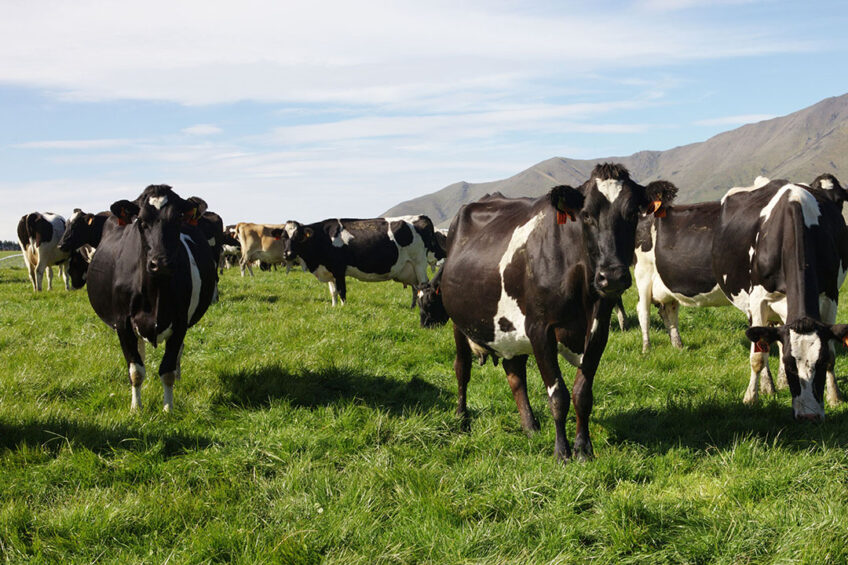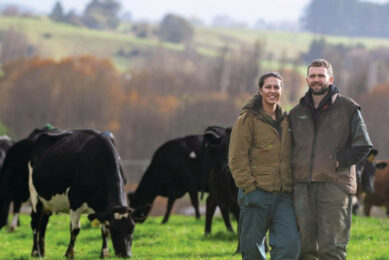Why NZ farmers favour efficiency

The numbers are crystal clear. According to the latest New Zealand Dairy Statistics, the country has during the period 2018-19 produced more milk from fewer cows. How has the country’s dairy sector managed this? In a word – efficiency.

One of the challenges facing agricultural industries globally is how to realise better results with less impact on the environment. Considering that industries often have several goals to reach when it comes to the impact on the environment, it seems that the dairy sector in New Zealand is one to take note of, in light of the recent 2018-19 New Zealand Dairy Statistics report released by DairyNZ and Livestock Improvement Corporation (LIC).
About DairyNZ and LICDairyNZ is a dairy farmer organisation that provides education, is involved in strategies including new efficient ways of farming, footprint reduction and knowledge sharing amongst farmers. The organisation also works with governments. For more info: https://www.dairynz.co.nz/ LIC is a dairy farmer owned co-operative which empowers livestock farmers through the delivery of superior genetics and technology. For more info: https://www.lic.co.nz/ |
Record milk production
New Zealand – in a nutshell it is one of the most profitable dairy farming sectors and lowest cost producers globally. Over the last 5 years cow numbers have remained steady around 4.9 to 5 million. According to the report by DairyNZ and LIC, the 2018-19 cow census shows that with the relatively stable total cow numbers, the country is producing more milk than ever before. New Zealand reached record milk production per herd and per cow this year, with dairy companies processing 21.2 billion litres of milk containing 1.88 billion kilogrammes of milksolids – both up 2.4% on the previous season. The latest numbers show that New Zealand has 4.946 million milking cows – a decrease of 0.9% from the previous season. (See box below).
NZ: Dairy sector in numbers
Source: New Zealand Dairy Statistics 2018-19 |
Efficiency tools
Dr Tim Mackle, DairyNZ chief executive states that New Zealand’s dairy sector is evolving, and the days of significant cow number growth may be over. With this evolving trend taking place, changes have also been seen in the business end of it, in the form of investment measures. This has allowed more technology on-farm and sustainability measures to be carried out and allowed the country’s dairy sector to remain competitive in the global market.

According to DairyNZ, New Zealand’s dairy farmers are committed to running their dairy farm more efficiently. Efficiency has clearly paid off with higher milk output as can be seen in the statistics released. Wayne McNee, LIC chief executive, tells Dairy Global that “today farmers are continuing to draw on a range of tools (See box below) to enable them to farm more productively and efficiently.”
Tools and servicesTo farm more productively and efficiently, farmers in New Zealand make use of a broad range of tools and services. For example: Tools
Services
|
The question is; what exactly are farmers doing to be more efficient?
“Starting with the first national herd database, one of the strengths of our co-op has always been our ability to use our data to drive genetic gain, produce more milk solids more efficiently and help farmers save time and increase their profits.” McNee adds: “We’re proud of the role we play in helping ensure cows around the country are year-on-year more efficient at converting grass into milk, in turn enabling dairy farmers to reduce their environmental footprint.” Although efficiency is a concept that can differ from farm to farm in terms of varied focuses, there are tools that are widely offered to dairy farmers in New Zealand that ensure utmost efficiency. These tools and services offered to New Zealand dairy farmers (see box above) allow for example quicker and easier decision-making, better feed management and a focus on the environment. Tools include data platforms, advice services and information sharing, for example. These tools help farmers focus on farm targets, benchmarks and allow them to make quick adjustments, precisely where they are needed. With laws and regulations continuously changing and new policies being signed off, tools like data platforms can help farms with quick adjustments to adhere to regulation changes because of easy access to specific data for example. This is how the sector has achieved a better yield, all the while remaining as efficient as possible.
Focus on emissions
It’s one thing for dairy farmers to have an increase in milk output and be profitable, however the consequential impacts have to be taken into account. DairyNZ has highlighted that the impact on the environment is certainly a factor that is continuously being considered. There is a strong emphasis on the environment. Today farmers are focused on productivity and efficiency, and taking responsibility for the care of our people, animals and our environment, DairyNZ chief executive Dr Tim Mackle says. He adds that, “farmers have been focusing on improving their environmental management in recent years and they have been doing this while stepping up their on-farm efficiency to produce more milk from fewer cows. More efficient milk production has benefits in areas such as greenhouse gas emissions and nutrient losses.”
The sector wants to take it’s achievements further. The dairy sector in New Zealand operates on a pasture-based system and is one of the lowest greenhouse gas emitters of the world’s dairy sectors and the goal is to reduce emissions even more.
When it comes to the environment and the dairy sector, future plans are underway. In October last year, the Government gave the greenlight for a proposal from the agricultural sector called He Waka Eke Noa (Maori for: We are all in this together). This will see the sector work with the Government to build a farm-level emissions framework for 2025 onwards. All farms in New Zealand will have Farm Environment Plans by 2025, under this agreement. The plans will include information on where emissions are from and how the farm will manage this using good farming practices.
A continuous uptake of herd improvement has been seen in the sector too, farmers are seeking higher performing and more efficient dairy cows through the use of herd testing and artificial breeding.
“New Zealand farmers are farming with improved precision and taking advantage of herd improvement services to produce more with less,” McNee adds. He further states that this increased investment on herd improvement shows farmers’ commitment to improve the quality of their herd assets to drive better sustainability and productivity outcomes.
It is without doubt that more and more farmers globally are looking ahead at farming practices that will withstand farming challenges, ensure animal well-being, and contribute to a better environment. New Zealand has shown that with focusing on productivity and efficiency it is very well possible to have increased output with less input, proving that efficiency is more than a step in the right direction.
This article was made possible with the kind cooperation of DairyNZ.
Join 13,000+ subscribers
Subscribe to our newsletter to stay updated about all the need-to-know content in the dairy sector, two times a week.












